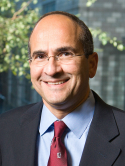Nipple-sparing mastectomy and immediate tissue expander/implant breast reconstruction Journal Article
| Authors: | Chen, C. M.; Disa, J. J.; Sacchini, V.; Pusic, A. L.; Mehrara, B. J.; Garcia-Etienne, C. A.; Cordeiro, P. G. |
| Article Title: | Nipple-sparing mastectomy and immediate tissue expander/implant breast reconstruction |
| Abstract: | Background: The nipple is an uncommon site for breast cancer development, but the nipple-areola complex is routinely excised in breast cancer treatment. The authors evaluated the risks and benefits of nipple- or areola-sparing mastectomy with breast reconstruction. Methods: The authors analyzed data on 115 consecutive nipple- or areola-sparing mastectomies with immediate tissue expander breast reconstruction performed in 66 patients from 1998 to 2008 at a single tertiary-care cancer center. Nipple-sparing mastectomies were performed for prophylaxis (n = 75) or treatment of disease (n = 40). Results: Mean patient age was 45 years (range, 24 to 61 years) and mean follow-up time was 22 months (range, 2 weeks to 91 months). There were 115 nipple- or areola-sparing mastectomies (48 bilateral and 19 unilateral), including 111 nipple-sparing and four areola-sparing mastectomies. On pathologic review, 20 breasts had ductal carcinoma in situ, 20 breasts had invasive cancer, 11 breasts had lobular carcinoma in situ, one breast had phyllodes tumor, one breast had mucinous carcinoma, and 62 breasts were cancer-free. Incision placement was periareolar and radial (n = 61), inframammary (n = 25), omega type (n = 14), customized to include a previous scar (n = 10), or transareolar (n = 5). Of all 115 nipple- or areola-sparing mastectomies, six nipples were lost because of occult disease (5.2 percent), and four nipples were lost because of wound-healing problems (3.5 percent). Conclusions: In the authors' series of nipple- and areola-sparing mastectomies performed for risk reduction or breast cancer, there was a low incidence of occult disease (5.2 percent). Nipple- and areola-sparing mastectomy may be feasible in selected patients and should be the subject of additional investigation. Copyright © 2009 by the American Society of Plastic Surgeons. |
| Keywords: | adult; treatment outcome; middle aged; patient satisfaction; implant; retrospective studies; young adult; patient selection; postoperative care; cancer staging; follow up; methodology; follow-up studies; neoplasm staging; cohort studies; neoplasm recurrence, local; cohort analysis; pathology; breast neoplasms; breast reconstruction; mammaplasty; retrospective study; tissue expansion devices; time; time factors; risk assessment; cancer invasion; tumor recurrence; breast tumor; neoplasm invasiveness; breast endoprosthesis; esthetics; graft rejection; graft survival; nipple; subcutaneous mastectomy; breast implants; mastectomy, subcutaneous; nipples |
| Journal Title: | Plastic and Reconstructive Surgery |
| Volume: | 124 |
| Issue: | 6 |
| ISSN: | 0032-1052 |
| Publisher: | Lippincott Williams & Wilkins |
| Date Published: | 2009-12-01 |
| Start Page: | 1772 |
| End Page: | 1780 |
| Language: | English |
| DOI: | 10.1097/PRS.0b013e3181bd05fd |
| PUBMED: | 19952633 |
| PROVIDER: | scopus |
| DOI/URL: | |
| Notes: | --- - "Export Date: 30 November 2010" - "CODEN: PRSUA" - "Source: Scopus" |
Altmetric
Citation Impact
BMJ Impact Analytics
Related MSK Work








